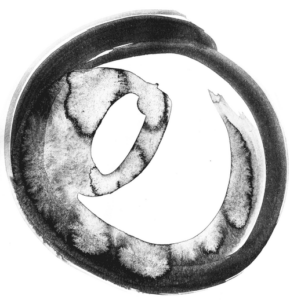Shinrin Yoku (or forest bath, see previous post) was born in Japan, but the interest in the effects that nature has on us humans has been present in other countries for many years. The three main theories that try to explain why people usually feel good in nature were actually developed by three American researchers:
1-Stress Reduction Theory, Roger Ulrich
2-Attention Restauration Theory, Rachel & Stephen Kaplan
3-Biophilia Hypothesis, Edward O Wilson
Sress reduction theory
Roger Ulrich’s theory (SRT) explains the positive psychological and physiological effects that nature has on humans by the idea that we evolved in natural environments. Therefore, these environments promote stress recovery, while urban environments hinder such processes. In a natural environment without any kind of threat, people are naturally relaxed. We are in the “rest and digest” mode. On the contrary, we experience (unconsciously) the urban environment as a threatening place where we must be ready to “fight or run away”, what is called “the fight or flight response”. This condition leads to all symptoms associated with stress (higher heart rate, blood pressure for example).
Slightly simplified, we are, according to Ulrich, calm and feel good in nature because we are at home.
Attention Restoration theory
Rachel and Stephen Kaplan’s theory may seem similar to Ulrich’s, but focus more on our cognitive processes. The theory suggests that we use two types of attention. One that requires effort and leads to fatigue. It is the one that applies in urban environments where so much happens constantly (traffic, other people, billboards, sound, light…). The second is a spontaneous attention that does not require effort and leads to a soft fascination. This happens in nature. Imagine when you look at leaves moving and rustling in the wind, snowflakes, raindrops falling into a lake. This kind of experience provides an opportunity for recovery and tranquility and promotes the positive psychological and physiological effects of nature.
Biophilia hypothesis
The Biophilia hypothesis from Edward O Wilson says that humans have an inner love for life and all forms of life, and that part of this love is “built” genetically. As we have become more and more disconnected from nature in our modern lifestyle with technological and digital innovations, we suffer from “nature deficit disorder”. We lack the connection to the living, we lack love.
An extension of the Biophilia hypothesis is the Topophilia hypothesis, which includes people’s connection (and love) to places. Both nature (genetics) and culture (learning) have influenced our preference for places that were favorable for our survival and development as human beings, i.e. natural environments. This connection is weakened and can even disappear in our modern lifestyle.
These theories do not exclude each other and can even complement each others to try to describe the process of the connection between humans and nature.
2020 an article was published presenting a theoretical model that integrates the three theories: The six-step model of Nature based therapy process (Oh et al. 2020)
In this study, researchers analyzed written descriptions of experiences in nature made by people who have suffered from various psychological, physiological and / or social symptoms. The results of the text analyzes led to a model that can explain the process that the study participants went through. The first part of the process (2 steps) is an emotional response with a sensory connection to nature that leads to acceptance of the life situation the person is in. From this point, the cognitive part of the process (2 steps) can begin with connection to oneself and the emergence of a new way of looking at things. In the third part (2 steps) people can start to change their behaviors, to start “again” with connection to others.
The authors of the article themselves say that their analysis has limitations and that more studies will be needed before the model can be generalized. However, I think that this study presents a very interesting integrative model that is based on the sensitive and cognitive aspects of the connection between humans and nature.
The model also fits well with the process that is going on and which I myself experience during a forest bath:
- connection to nature with the senses
- connection to myself – self-insight
- connection to others – unity, empathy
As you may have already read in various social media:
“There is no wifi in the forest but I promise you will find a better connection”
More about our connection to nature in the following blog posts: How do we speak with trees? How does earth make us happy? or how can we recognize beautiful patterns in nature?
References
• Ulrich R.S. View through a window may influence recovery from surgery. Science. 1984. 224:420–421
• Kaplan, R.; Kaplan, S. The Experience of Nature: A Psychological Perspective. Cambridge University Press. 1989.
• Wilson E.O. Biophilia and Conservation Ethic. In: Kellert S.R., Wilson E.O., editors. The Biophilia Hypothesis. Island Press; Washington, DC, USA: 1993.
• Thomas Beery, K. Ingemar Jönsson and Johan Elmberg. From Environmental Connectedness to Sustainable Futures: Topophilia and Human Affiliation with Nature. Sustainability 2015. 7, 8837-8854
• Kyung Hee Oh, Won Sop Shin Tae Gyu Khil and Dong Jun Kim, Six-Step Model of Nature-Based Therapy Process. Int J Environ Res Public Health. 2020. 17(3): 685.



